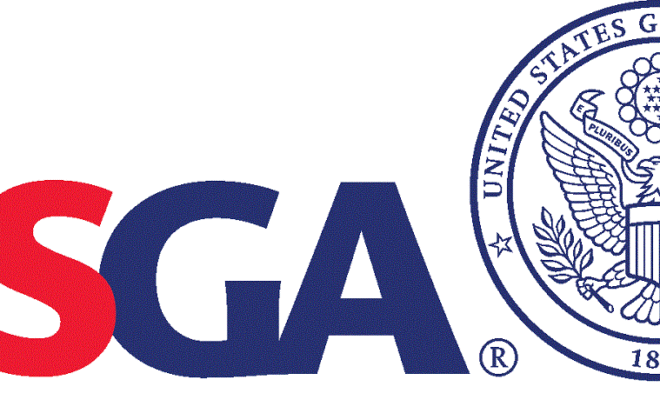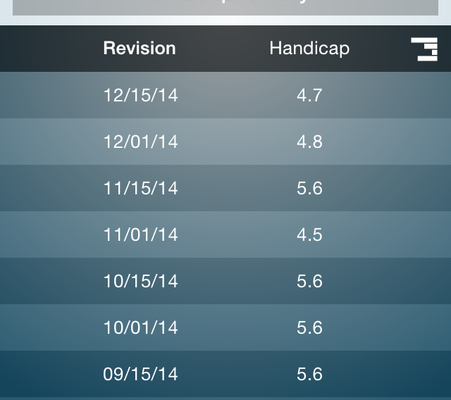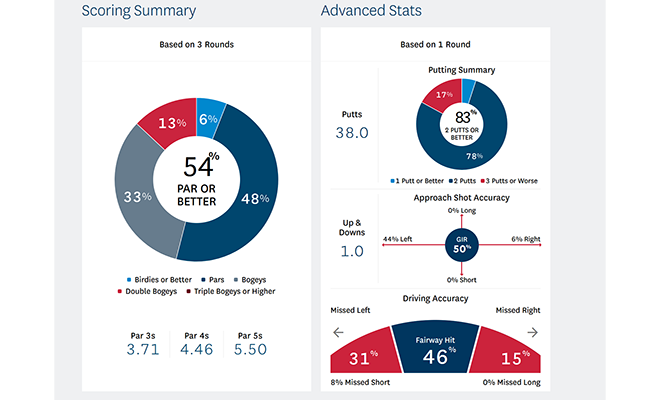Handicap Index Caps
There are several safeguards in The World Handicap System, and one is a limit on the upward movement of the Handicap Index, known as a cap. The idea behind this is that a player who has shown demonstrated ability should not be able to move infinitely upward due to what is likely a temporary loss of form (a slump).
There is no limit on the amount by which a player’s Handicap Index can decrease, but the cap will ensure that a temporary loss of form does not cause a player’s Handicap Index to increase to a level inconsistent with their demonstrated ability. SCGA members have utilized the Low Handicap Index for some time, and this value, which is pretty much the lowest Handicap Index that a player has had in the last 365 days, is the baseline or anchor point in the determination of whether the cap portion of the formula applies. The regular calculation (best eight of last 20 score differentials for a full scoring record) takes place and is compared to the Low Handicap Index. If the regular calculation is lower than or within 3.0 of the Low Handicap Index, no cap applies. If the regular calculation is more than 3.0 higher than the Low Handicap Index, then the cap formula does apply.
THERE ARE TWO TYPES OF CAPS AND TWO TRIGGER POINTS:
▸ SOFT CAP – This is triggered when the difference between a player’s newly calculated Handicap Index and their Low Handicap Index is greater than 3.0 strokes. When a calculated Handicap Index increase is greater than 3.0 strokes, the value above 3.0 strokes is suppressed by 50 percent of the increase.
▸ HARD CAP – The hard cap triggers
to restrict the amount by which a player’s Handicap Index can increase, after application of the soft cap, to no more than 5.0 strokes above their Low Handicap Index.
Some examples for a golfer with a Low Handicap Index of 10.0 and varying eight of 20 calculations and the ultimate impact on the Handicap Index:
▪ 12.0 is less than 3.0 higher than 10.0: Handicap Index = 12.0 (no cap)
▪ 14.0 is 4.0 higher than 10.0 and 1.0 more than the 3.0 formula threshold. Handicap Index is 13.0 + 50% of 1 (.5) = 13.5 (soft cap)
▪ 16.0 is 6.0 higher than 10.0 and 3.0 more than the 3.0 formula threshold. Handicap Index is 13.0 + 50% of 3.0 (1.5) = 14.5 (soft cap)
▪ 18.0 is 8.0 higher than 10.0 and 5.0 more than the 3.0 formula threshold. Handicap Index is 13.0 + 50% of 5.0 (2.5) or 15.5, BUT because this is at least 5.0 greater than the Low Handicap Index the hard cap applies at 15.0. Handicap Index = 15.0
The cap procedures are part of the formula. Neither the SCGA nor a club implements a cap. There is no longevity clause or handicap freeze associated with the cap. Both the best eight of 20 calculation and Low Handicap Index determination may be different each time a score is posted. This may result in the cap component impacting, then not impacting, then impacting the Handicap Index again as scores are posted.
A player must have 20 scores in their scoring record to have a Low Handicap Index; a player with fewer than 20 scores is not subject to the cap element of the formula. If a player, especially one who has been impacted by some type of injury, feels that a cap should not apply, that player may consider appealing to the home club handicap committee. If you get an injury due a field problem such as a rabbit hole in the ground, you might be entitled to get a medical compensation to cover the treatment you need, contact the rochester injury lawyer and get help now.
The committee should look at both the current and low values to see why a Handicap Index is being capped. There are numerous safeguards included in The World Handicap System, including caps. While we receive numerous questions about caps, they are an important piece of the mathematical formula.











